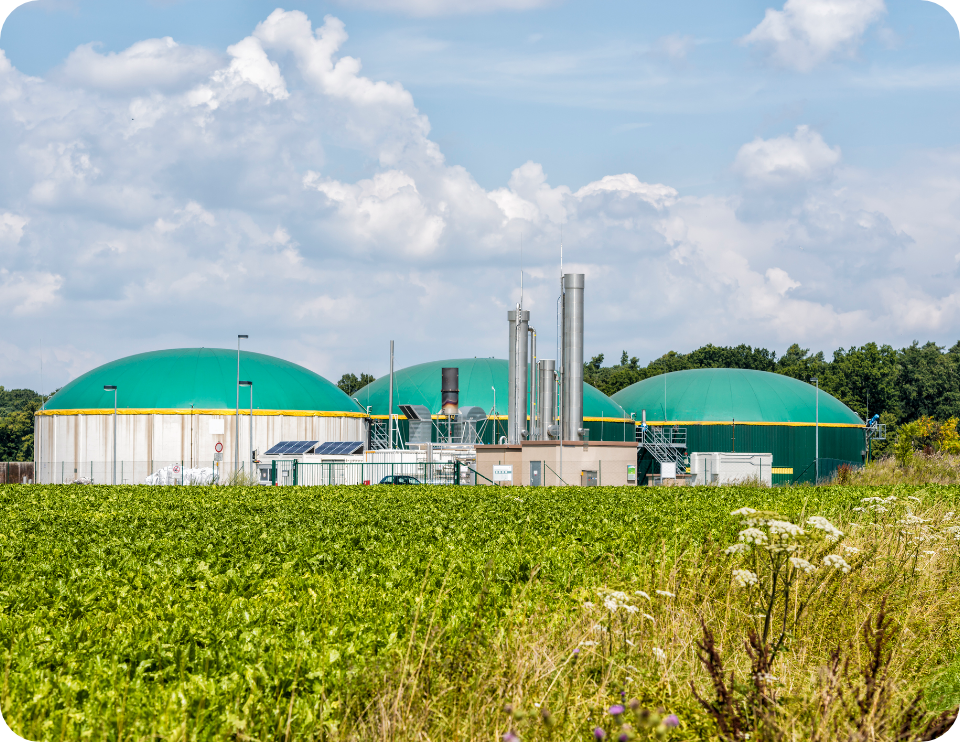What is Renewable Natural Gas?
Renewable natural gas (RNG) is made from various biomass sources, either through anerobic digestion of organic waste materials, or through thermochemical means. It’s commonly produced from animal agriculture and landfill operations, as well as other non-fossil fuel sources.

Benefits of Renewable Natural Gas
- Flexible. Renewable natural gas is identical to traditional natural gas in terms of chemical structure and physical properties
- Performance. Metrics are similar to those of traditional natural gas
- Diverts waste from landfills. Capturing animal and landfill emissions and refining them into renewable natural gas reduces the amount of methane and other climate-driving pollutants entering our atmosphere
ALSO KNOWN AS BIOMETHANE, RENEWABLE NATURAL GAS IS PRODUCED FROM THE BREAKDOWN OF ORGANIC MATERIALS AFTER IMPURITIES ARE REMOVED.
Compressed Natural Gas
What is Compressed Natural Gas?
Compressed natural gas (CNG) is produced by compressing natural gas to less than 1% of its volume at standard atmospheric pressure. To provide adequate driving range, CNG is stored onboard the vehicle in a compressed gaseous state at a pressure of up to 3,600 pounds per square inch.
CNG is used in light-, medium-, and heavy-duty applications. A CNG-powered vehicle gets about the same fuel economy as a conventional gasoline vehicle on a GGE basis. One GGE equals about 5.66 pounds of CNG.

What are other benefits?
- Secure energy source. Most natural gas resources are domestic
- Cost. Although prices may vary, natural gas is less expensive than gasoline and diesel fuel
- Flexibility. Many natural gas vehicle models are available. Also, most homes in the U.S. have access to natural gas
CNG IS SUITABLE FOR HEATING, COOKING, ELECTRIC POWER AND VEHICLE FUEL, PRODUCING LOWER GREENHOUSE GAS EMISSIONS THAN CONVENTIONAL FUELS.
Liquified Natural Gas
What is Liquified Natural Gas?
Liquified Natural Gas (LNG) is produced by purifying natural gas and super-cooling it to -260°F to turn it into a liquid. During the process known as liquefaction, natural gas is cooled below its boiling point, removing most of the extraneous compounds found in the fuel. The remaining natural gas is primarily methane with small amounts of other hydrocarbons. One gasoline gallon equivalent (GGE) equals about 1.5 gallons of LNG.
LNG is suitable for trucks that require longer ranges because liquid is denser than gas and, therefore, more energy can be stored by volume. LNG is typically used in medium- and heavy-duty vehicles. It’s best suited for fleets with centralized fueling, such as city fleets with garbage trucks, snowplows and maintenance vehicles.
LNG must be kept at cold temperatures and is stored in double-walled, vacuum-insulated pressure vessels. These storage requirements and the relatively high production cost have limited widespread use of the fuel.


